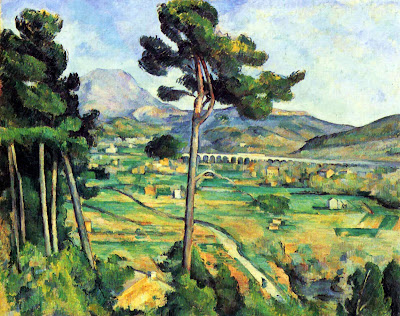POST-IMPRESSIONISM
The term Post-Impressionism applies to the artists that, around and after the 1880s, were both developing and deviating or departing from the original aspects of Impressionism. Focusing on particular formal and expressive possibilities opened to painting by the first generation of Impressionist artists, a number of Post-Impressionists painters developed to their “logical conclusion” some of the formal inventions and tendencies of Impressionism. Others, within the visual languages of Impressionism, refashioned painting and refined or redirected the new artistic structures into new ground, deepening and radicalizing aspects of the formal revolution started by Monet and his colleagues. While others still, focused on the expressive possibilities that the new art made possible.
The first and second aspects of the Post-Impressionist adventure are exemplified in the explorations of a number of artists in the period from Seurat to Cezanne. Gauguin and Van Gogh are examples of the uses of new formal concepts to explore the subjective aspects and the cultural conditions of art at the end of the century.
The art of the period is also influenced by Symbolist aesthetics. With Symbolism, the development of an art of the imagination, the dream and the fantastic, expressing a kind of exacerbated Late Romantic sensibility, a type of “Romanticism of exhausted passions”, impacts the literature and visual arts of the period, as a counter-current to the realistic and positivist tendencies or allegiances of Impressionism and of the dominant Post-Impressionists currents. Symbolism represents a “spiritualist” reaction to the “materialism” of the age, taking these terms in a generalized sense and also as relative and specific to some of the ideological self-representations of the period. These artistic categories and classifications do not exclude transitional and mixed forms. In fact, the art of the Fin-de-siècle is also marked by cross-fertilizations and by diverse kinds of conceptual and formal “hybrids”.
The first and second aspects of the Post-Impressionist adventure are exemplified in the explorations of a number of artists in the period from Seurat to Cezanne. Gauguin and Van Gogh are examples of the uses of new formal concepts to explore the subjective aspects and the cultural conditions of art at the end of the century.
The art of the period is also influenced by Symbolist aesthetics. With Symbolism, the development of an art of the imagination, the dream and the fantastic, expressing a kind of exacerbated Late Romantic sensibility, a type of “Romanticism of exhausted passions”, impacts the literature and visual arts of the period, as a counter-current to the realistic and positivist tendencies or allegiances of Impressionism and of the dominant Post-Impressionists currents. Symbolism represents a “spiritualist” reaction to the “materialism” of the age, taking these terms in a generalized sense and also as relative and specific to some of the ideological self-representations of the period. These artistic categories and classifications do not exclude transitional and mixed forms. In fact, the art of the Fin-de-siècle is also marked by cross-fertilizations and by diverse kinds of conceptual and formal “hybrids”.
Marcelo Guimarães Lima
Seurat, The Circus, 1891;
Oil on canvas, 73 x 59 1/8 in; unsigned;
Musee d'Orsay, Paris
Van Gogh
The night café, 1888;
Yale University Art Gallery
Gauguin
Femmes de Tahiti [Sur la plage] 1891
(Tahitian Women [On the Beach])
Oil on canvas, 69 x 91 cm
Musee d'Orsay, Paris
Cézanne
Still Life With a Basket (Kitchen Table)
c. 1890-95; Musée d'Orsay, Paris
Still Life With a Basket (Kitchen Table)
c. 1890-95; Musée d'Orsay, Paris






Comments